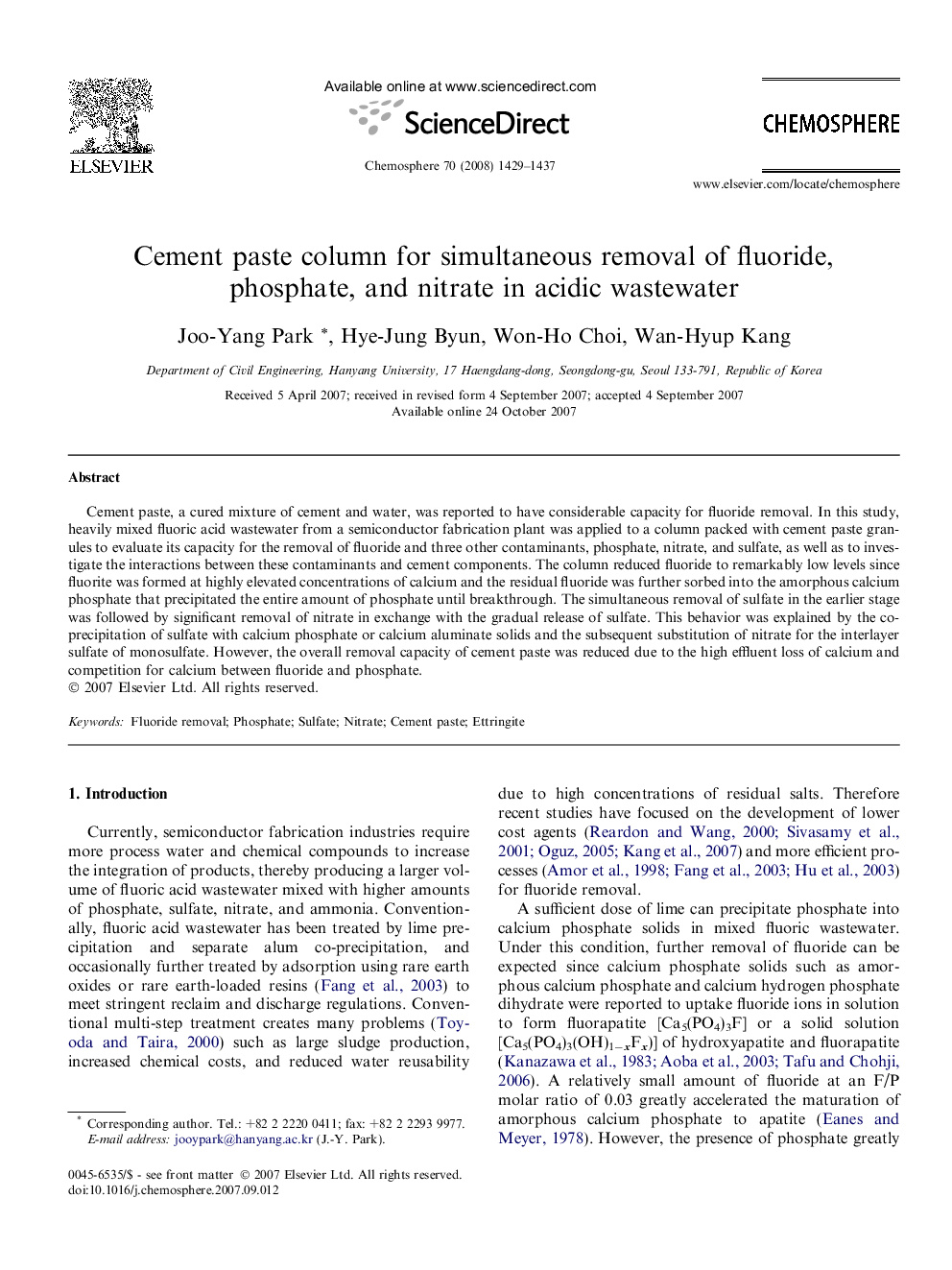| Article ID | Journal | Published Year | Pages | File Type |
|---|---|---|---|---|
| 4414844 | Chemosphere | 2008 | 9 Pages |
Cement paste, a cured mixture of cement and water, was reported to have considerable capacity for fluoride removal. In this study, heavily mixed fluoric acid wastewater from a semiconductor fabrication plant was applied to a column packed with cement paste granules to evaluate its capacity for the removal of fluoride and three other contaminants, phosphate, nitrate, and sulfate, as well as to investigate the interactions between these contaminants and cement components. The column reduced fluoride to remarkably low levels since fluorite was formed at highly elevated concentrations of calcium and the residual fluoride was further sorbed into the amorphous calcium phosphate that precipitated the entire amount of phosphate until breakthrough. The simultaneous removal of sulfate in the earlier stage was followed by significant removal of nitrate in exchange with the gradual release of sulfate. This behavior was explained by the co-precipitation of sulfate with calcium phosphate or calcium aluminate solids and the subsequent substitution of nitrate for the interlayer sulfate of monosulfate. However, the overall removal capacity of cement paste was reduced due to the high effluent loss of calcium and competition for calcium between fluoride and phosphate.
